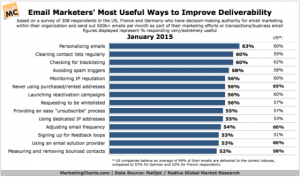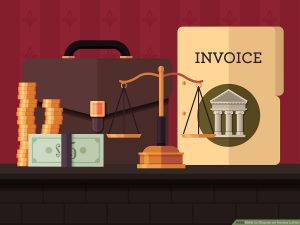
As an entrepreneur, you’ve gotta deal with a lot of frameworks…
Sales page frameworks.
Marketing funnels.
Business and revenue models.
Formulas for social media copy that gets results.
It can make that creative mind of yours feel like that of a corporate drone. You want to throw out all those set techniques and frameworks and go back to what flows, right?
But what if I told you that the secret to managing it all without going insane…
Was more frameworks?
Well, buckle up. Because I AM going to tell you that. I’m sorry, I know you started your business for flexibility, creativity, and saying “damn the man.”
But to keep growing your creative business, you need to reign in the chaos. And when you’re trying to juggle a dozen or two systems to run your biz, you unfortunately need a few more of them to organize it all.
These time management systems will take care of it.
And they’re not confusing, overwhelming, technical, or boring. In fact, they help you reduce the amount of technical boringness in your life so you can GSD and have more fun!
So let’s take a look at the productivity systems all creative entrepreneurs need.

1. Outsource the work to someone else

Obviously, the easiest way and quickest way to get rid of work is to “hot potato” it to someone else. What is “hot potatoing,” you ask?
It’s a phrase I made up 5 seconds ago to describe tossing work to someone else and going “here, you take it.”
Fun, right?
I’ve done this sparingly, but when I have, it’s felt sooo good. Leading up to my first launch, I started designing The Productivity Power-Up workbook to offer as a bonus and figured I had it handled. No problem.
I had a template for PDF content upgrades I could go off of, so how hard could it be?
But then I realized the workbook’s content was like 30x longer than those, and then I needed to make the fields fillable, and it’s not like I could make a course bonus my top priority when I had the actual course to create…
Enter me, browsing my Feedly feed in a cab on my way home to do as much work as possible before passing out for the night. I was reading something from Miranda, and thinking, “you know what? I’m throwing this hot potato to her. Let me see if she’s free to catch it.”
Ta-da! In one quick email, I saved myself about 10 hours of work. And I doubt it took Miranda anywhere near that long, since she’s actually a designer and not just throwing things together until something only looks like half-crap. (Bberg design school…you know you want it…)
And that last part is key to successful outsourcing: you’re taking work you don’t want to do and throwing it to someone who likes it or is better at it.
Examples of work to outsource
- If you’re a writer, outsource research, editing, creating graphics, or promoting your work.
- If you’re a designer, hire out copywriting for your own website, emails, and blog posts.
- If you’re a VA, hire out lower level work or to a less experienced VA.
- If you’re a course creator, get help with maintaining the course platform and responding to support queries.
How to decide which parts of your business to outsource
Out of all the options listed in this post, outsourcing will be the most expensive one in most cases. So you want to explore other options before you resort to hiring something out. You want to make sure it the absolute best option for you.
Outsourcing is the way to go if:
- It’s a task you’re not good at. If outsourcing will get higher quality results, go for it.
- It takes forever. When a graphic takes you an hour but a designer 15 minutes, you can hire them to create 4 in the amount of time it would take you to do 1.
- You don’t know how to do it. This part’s quite obvious. If you can’t do it yourself, you need someone else to.
How to start outsourcing for your solo biz
In addition to being one of the more expensive time management options, it’s also one of the more complicated ones to get started with.
That’s for the simple reason that it involves another person and another brain. And you need to take the stuff in yours, and make sure it’s in theirs.
And you have to actually teach them your processes and systems, you can’t put on high tech knowledge transfer helmets and press ‘go.’ (But wouldn’t that be awesome?)
To make getting started as easy as possible, you’ll want to make sure you have documented processes. Once you’ve decided what you’re outsourcing, you need to have detailed instructions for your VA or whoever to follow.
If you’re hiring out something you already do, you’ll want to write out step-by-step directions or record a video of yourself completing the task to ensure an easy hand-off to whoever you hire.
But if they’ll be taking on something new, it might be better to create an outline of what you envision or what end results you want to get, and consult with them on what process they can do to get you there.
2. Schedule stuff for later

The next great time management technique is putting in the work yourself, but saving the “results” for later.
To put it in Doctor Who terms, because yes, that can help, it’s like your work is the Doctor and his companion, and your scheduling tool is the TARDIS letting your content travel in time.
Like writing an email to be sent at a later time. Scheduling a blog post. Adding stuff to your Buffer queue.
It comes in handy because some things need to happen on certain timelines, and those timelines just aren’t convenient.
Think about social media. You have to post at certain times of day to get the most eyeballs on your content. But do you want to drop everything every time those numbers on the clock roll around, just to type out a quick tweet or Instagram post?
Of course not.
You want to write tweets and take Insta photos when it’s convenient for you, and then publish them at times that are best for your audience. That’s a win-win, and win-wins are awesome.
Scheduling is even more powerful when combined with batching (which we’ll get to in a second) in particular.
Examples of work to schedule out
- Weekly newsletters that go out first thing in the morning.
- Social media posts that are published throughout the day all day, every day.
- Email sequences that involve several stages with different people in each of them.
- Email in general – a neat little trick while is to schedule responses to go out later so you don’t have as many emails and replies coming into your inbox while you’re trying to clean it out.
How to decide what to schedule
Scheduling is kind of like a rest stop on the way to total automation, but for stuff you can’t put on autopilot completely. Think of things that:
- Occur at inconvenient times
- Are too unique or customized to automate completely
- Reoccur pretty frequently
Does a scheduled task need to meet all of the above? No, but scheduling stuff like this is what will give you the biggest return.
How to start scheduling tasks in advance
Scheduling tends to be an app-specific thing. For example, you use social media tools for social media scheduling. Email tools for email scheduling. And so on, and so on. This differs from tasks like automation where you use a separate tool to connect all the other specific ones.
In terms of getting started, I find it helpful to map business systems out visually. For scheduling in particular, a calendar seems like a good way to organize it.
For social media scheduling, you might want to plan when you’ll post to different channels or about different topics.
Then once you already know when to schedule things for, set a recurring calendar appointment or to-do list item to go through and schedule them.
Determining scheduling can be tricky, but Tim Ferriss lays it out really obviously in The 4-Hour Workweek: spread work out as much as you possibly can without losing effectiveness. If you can check email once a week and not suffer a bunch of negative consequences, check email for 2 hours once a week instead of 15-30 minutes each day.
3. Batch your tasks (batch ‘em real good)

Building onto scheduling tasks, batching them is when you perform and schedule a ton of tasks at once. It’s really awesome for those short, 5-minute-long suckers that take no time, yet you can’t seem to find any time for.
While it doesn’t actually create any less work for you, like the other time management techniques here, batching tasks allows you to do the same amount of work in less time.
I don’t know about you, but as long as I’m working less, I’m good. It doesn’t matter how I get there.
Doing these tiny tasks individually, a few minutes at a time, isn’t doing yourself any favors when it comes to staying focused. Whenever you start a new task, it takes you awhile to get “in the zone.” And nowadays, we have so much tempting and distracting us that a lot of the time, we never work on one task long enough to achieve what’s called deep work.
Batching tasks – like scheduling a week’s worth of social media posts every Monday instead of doing a day’s worth every morning – makes it easier to get into that zone where you’re workin, *clap* you’re groovin, *clap* you’re in the zone, you’re moving. *clap clap* (Say that like a cheer, batching’s more appealing that way.)
Examples of great work for batching tasks
The best things to batch are stuff that’s very frequent, repetitive, and short. Here are some ideas for where to start:
- We all know we should check email like twice a day. But you can take it further and check email for an hour every other day, and so on and so on.
- Sit down and schedule social media content once a week instead of more frequently.
- Instead of reading blog posts every time you come across one on Facebook, Twitter, email, etc., save them for “designated reading time.”
- When you’re getting ready for a product launch, write all the sales content – the sales page, launch emails, the whole shebang – in one sitting to keep your mind in that same place.
How to decide what to batch
Like I said before, the best tasks to bundle together are frequent, short, and repetitive. Let’s break each of those down.
Batching is good with frequent tasks because the more you can bundle together, the more effective you’ll be. The work needs to be there in order for you to batch it.
The second criteria is that the tasks are short. This is so that you have the time to do multiple tasks together. If something takes half an hour to do something, and we’re only supposed to work for a few hours – at most – without a break, then you can batch like a maximum of 5 or so tasks.
Finally, you want things to be repetitive. That’s what really gets you “into the zone.” Each time you do something, it feels a little bit easier and like it takes a little less time.
How to start batching tasks
Batching tasks works best when you do a lot of small tasks at one time. Sometimes tasks aren’t actually small enough for that to work out well, at least not without an adjustment.
All you really need to do to get started is break down tasks into smaller chunks until you have short 5-minute pieces, of which you can do a bazillion at a time.
Take social media scheduling. Let’s say this is your process for scheduling a new blog post:
- Write social media copy in Buffer.
- Switch over to Canva to create a graphic to go with it.
- Schedule the text and graphic together.
That’s not great for batching since there’s still a lot of back and forth and you don’t really get into the zone in one place. So instead, you’d treat each of those steps as separate batching sessions.
In one session, you would write social media copy for…say…20-30 posts. Then at a totally separate time, you’d create the graphics – all at once. Finally, in a separate session you would put it all together and schedule it out.
4. Create content templates

Next up on “le list” is creating content templates.
Like scheduling, this is like an “automation lite” type of thing. You’re not “one and done-ing” it, but you are creating a significant shortcut and making things way easier on yourself.
It’s also like batching, since you’re taking advantage of a repetitive task and making it easier for yourself.
A template is a building block or starting point for a piece of content – any type of content. Emails, blog posts, graphics, photos, social media, PDFs, videos, podcasts…you can create a template for any kind of template.
Take email templates. By creating them for things you say over and over again in multiple emails, you take a big chunk out of work out of each one. You apply the template and customize it, and within seconds you have 95% of the email banged out.
But unlike automation, there’s still a moment for you to jump in and customize things. And unlike batching, you are doing less work than if you were working totally manually.
Examples of content to create templates for
- Personal emails to your subscribers and community
- Outreach emails for marketing and PR
- Recurring blog post series like weekly roundups or monthly updates
- Supporting graphics for blog and social media posts
- PDF layouts for content upgrades
- The intro and closing sequences of your podcast or YouTube show
How to decide what to create templates for
The most important thing about tasks you create templates for is that they’re similar from instance to instance. Otherwise, the amount you spend customizing parts of the content each time cancels out the time you’re supposed to be saving by automating the other parts.
And these similar pieces of content also need to occur regularly. If you’re only using a template once a year, the upfront work was kind of pointless.
How to start using content templates
The two things you need to start using templates are the actual templates you’ll be using, and the technology to use and re-use them.
Let’s cover content first. The two popular formats for templates are Mad Libs and fill-in-the-blanks.
“Mad Libs” templates are when you give yourself prompts, like in Mad Libs: “Hi [insert first name], thanks for contacting me about [insert project name].”
Fill-in-the-blanks are looser, but the areas to customize stand out more: “Hi _______, thanks for contacting me about ___________.”
Actually using the templates depends on what app you’re using, and what you’re using it for. You can use Gmail Canned Responses for email templates. Canva for social media graphics. A WordPress plugin for blog posts. You see where I’m going with this.
5. Automate it all and go take a nap

Now, all those other time management techniques still involved some kind of work or action from you each time a task happens. To me, it’s the best way to save time.
Automation takes it one step further and lets you be totally hands off. Whereas the others help you cut down on how long a task takes or how much work it involves, automating tasks removes them from your to-do list completely.
You do a little more work up front to set up workflows and integrations that do the work for you, but after that it’s mostly “set it and forget it” and, as Ben Wyatt call it, “maintenance mode.”
Examples of tasks to automate
- Communication with clients and other freelance management
- Filtering and organizing your inbox to focus on important messages
- Managing different bank accounts and investments to optimize your finances
- Resharing your best social media posts to promote older blog posts
How to decide what to automate
The best tasks to automate tend to be frequent, generic, and time-consuming.
This is pretty similar to the criteria for scheduling, and for the same reasons. The main difference is that tasks you automate should be generic. This is because you don’t have the chance for that hands-on customization you do with scheduling or templates. So the less customized the task needs to be, the easier it will be to automate.
You also should think about the tasks that would be best to eliminate for your peace of mind:
- What takes up the most time?
- What do you hate doing the most?
- Which tasks feel like they aren’t worth your time?
- What do you have the most trouble with?
- What requires timeliness?
How to get started
The best way to get started with automation is with designated automation apps. You can also eventually take advantage of features built into the different niche tools you already use, but you want to start with the basics.
Designated automation apps like IFTTT and Zapier connect to hundreds of different apps in dozens of different verticals. By learning them, you’ll be able to automate anything. That’s why you should prioritize figuring them out over any other tools.
Start time traveling and hot potato-ing to grow your creative biz
Productivity and systems don’t need to be boring. Not when you look at them like this. Not when you’re playing hot potato and using Doctor Who to get rid of the boring work and make more time for the stuff you actually enjoy.
So systemize your schedule and get started.
Business & Finance Articles on Business 2 Community(41)







